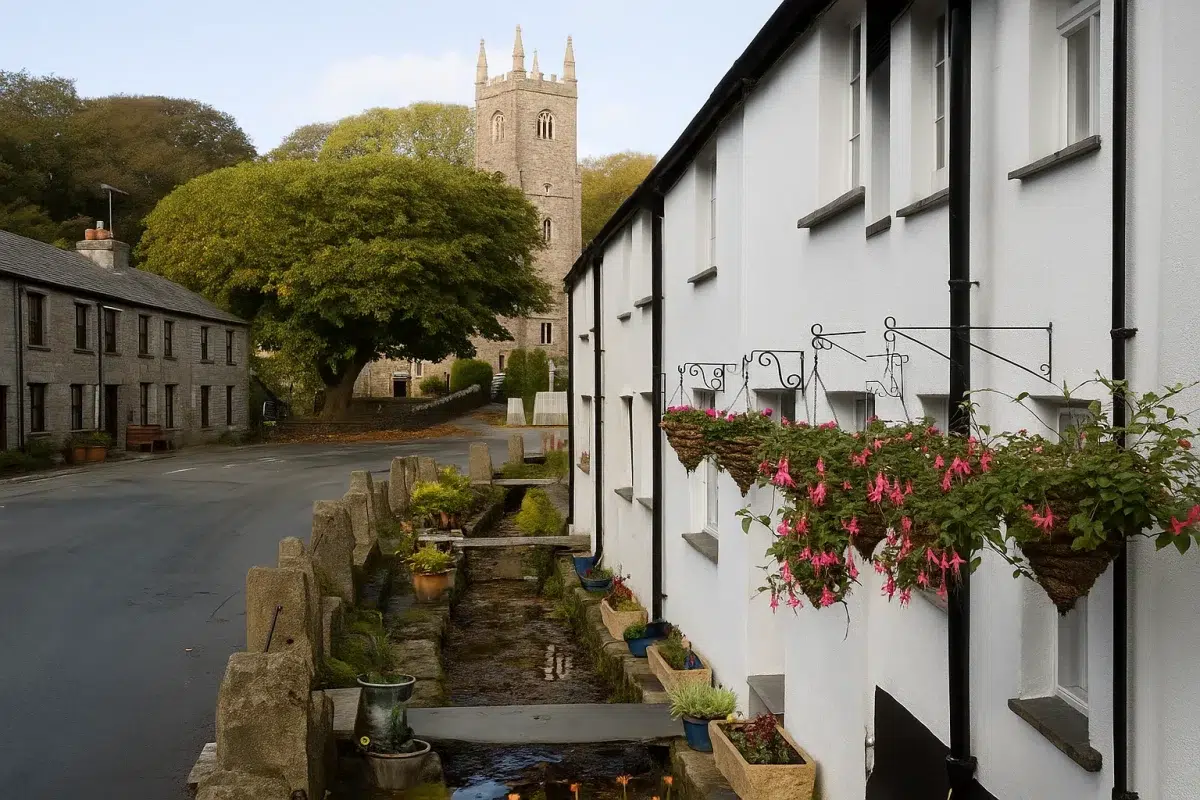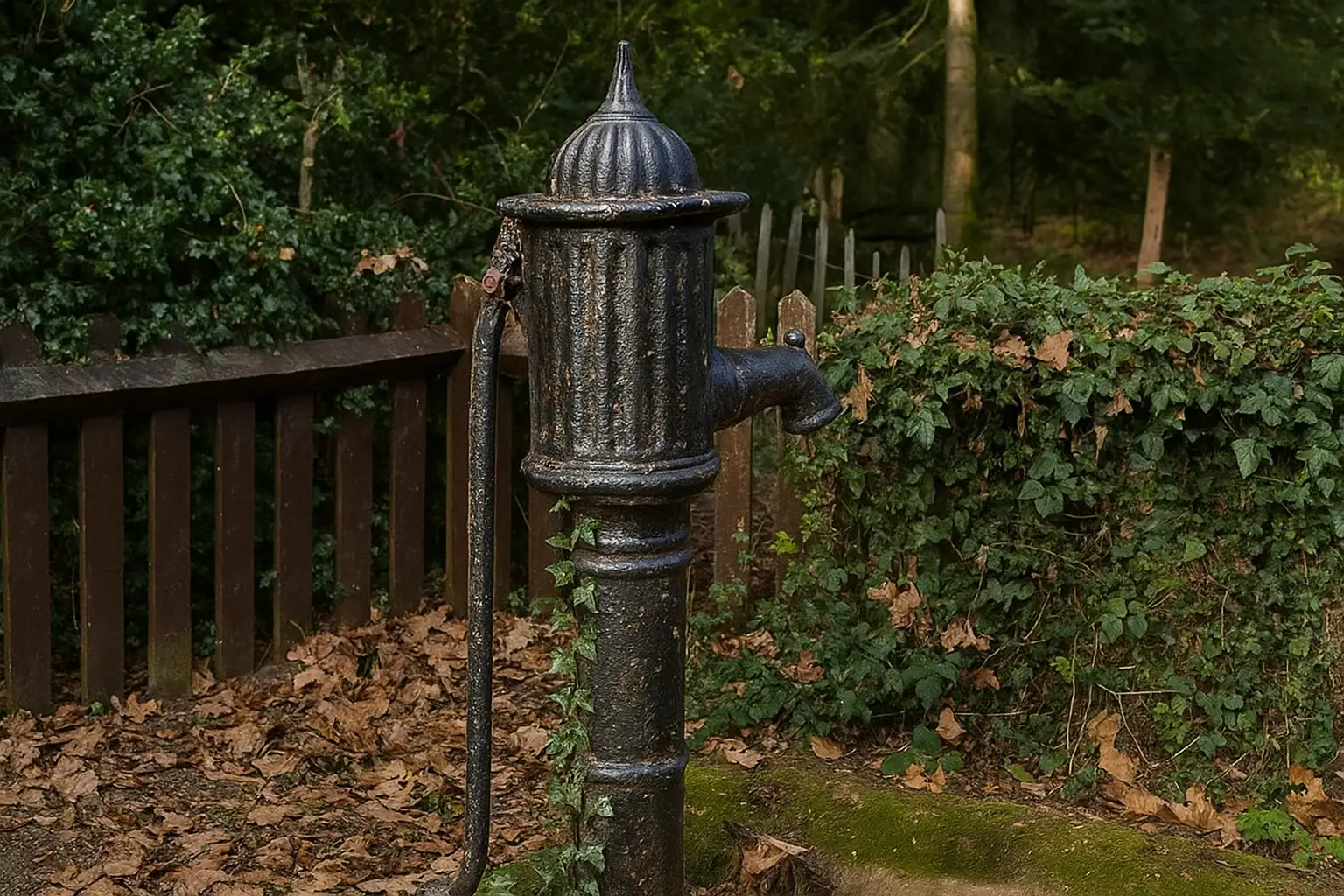
Right then, let’s take a wander through Cornwall’s underground and overground pipes, tunnels and channels – and uncover how this rugged corner of England learned to keep its water moving. Welcome to the first instalment of our History of Drains series, Cornwall edition.

The Great County Adit
Cornwall’s 40-mile Underbelly
Imagine a city of tunnels beneath the hills. From 1748 onwards, Cornish miners carved out the Great County Adit: over forty miles of interconnected drainage tunnels plunging eighty to a hundred metres below the surface. Its mission? To drain more than a hundred tin and copper mines so miners could dig deeper without their workings flooding.
At the height of its power in the nineteenth century, this subterranean marvel was discharging well over 14 million gallons of water each day into the Carnon River. That’s enough water to fill six Olympic swimming pools every single day – and it kept Cornwall’s engine of industry running. Without the Adit, many of those deep mines would have been full of water and long abandoned.
Even now, though most of the tunnels are silent, their courses still shape Cornwall’s landscape. Hikers on the Mineral Tramways can glimpse shafts and adits peeking through gorse and bracken – a reminder of the county’s watery underbelly.
Leats and Kennels,
Bringing Water into Town
If you’ve strolled the streets of Helston, you may have spotted stone-lined channels, locally called “kennels”, running alongside old buildings. These open leats date back, in parts, to medieval times, though most of the stonework you see today was laid in the 1800s.
Drawn from rivers like the Cober, they served all sorts of purposes: local folk used them for washing, tradesmen relied on them for tin processing, and street sweepers used their flow to keep lanes tidy. Clever little sluice gates and overflow weirs let townsfolk control the volume, you didn’t want a sudden deluge in narrow streets.
These leats are a perfect example of Cornwall’s ingenuity: simple masonry, smart hydraulics, and enough flow to meet domestic and industrial needs without fancy pumps or motors.
Victorian Cast Iron Pipes with Character
Jump forward to the mid-nineteenth century and you’ll see the first widespread use of cast iron pipes and guttering across Cornwall. Our local foundries, once forging smelted ore from nearby mines, began churning out durable cast-iron water goods that quickly outclassed wooden troughs and flimsy lead sheeting.
Cast iron brought three big wins: it wouldn’t warp in heat or burn in fires, it lasted for generations, and it could be moulded into all sorts of decorative shapes. Look closely at Truro Cathedral or the grand townhouses of Penzance and you’ll spot elegant downpipes with flared collars, ornate brackets and embossed fluting – each one a tiny Victorian flourish.
Today, heritage teams prize these original fittings, because when properly maintained they still keep our buildings watertight. And they’re proof that in Cornwall, even the stuff under your boots or over your head was given a touch of style.
Stepping Up Urban Sewage Public Health and Pipes
By the 1870s, grime and overcrowding in towns like Truro made it clear that open drains and shared pumps just weren’t cutting it. The 1873 Public Health Act pushed local councils to build proper sewage disposal and clean water supplies.
Truro soon boasted reservoirs up on the hills, settling beds to filter out impurities, and covered sewer systems to cart away foul water. Suddenly, water from the tap was safer to drink, and streets weren’t ankle-deep in wastewater after a heavy rain. It wasn’t perfect, there were still floods and overflows, but it marked a shift from ad hoc drainage to planned networks designed with public health in mind.
Battling the Floods – The Ever-Present Challenge
Cornwall’s narrow valleys and sudden downpours have always tested its drains. As late as the twentieth and even early twenty-first century, towns like Bodmin saw streets turned into rivers when heavy rains overwhelmed ageing pipes. Each flood taught us something new – whether it was enlarging culverts, adding retention ponds or simply giving drains a good clean before the wetter months.
Today, modern upgrades – from CCTV surveys of old pipes to smart flood barriers – are joined by the same spirit that drove that first miner’s pick: solve problems with practical engineering, learn from every failure, and keep the county moving.

From subterranean adits to stylish cast-iron downpipes, Cornwall’s drainage history is a tale of resourcefulness and adaptation. We’ve harnessed gravity, stone and iron to wrestle with water through the ages. And while many of those nineteenth-century leats and pipes no longer work quite as they once did, they remain woven into the fabric of our towns and countryside – silent reminders of the miners, masons and metalworkers who shaped this place.
Next time you splash through a puddle in a Cornish lane, think of the hundreds of miles of tunnels and pipes beneath your feet. History’s still flowing – one drop at a time.

